‘She Had an Improvisational Spirit and Rascally Ways’: See the Sculptural Quilts of Pioneering American Textile Artist Elizabeth Talford Scott
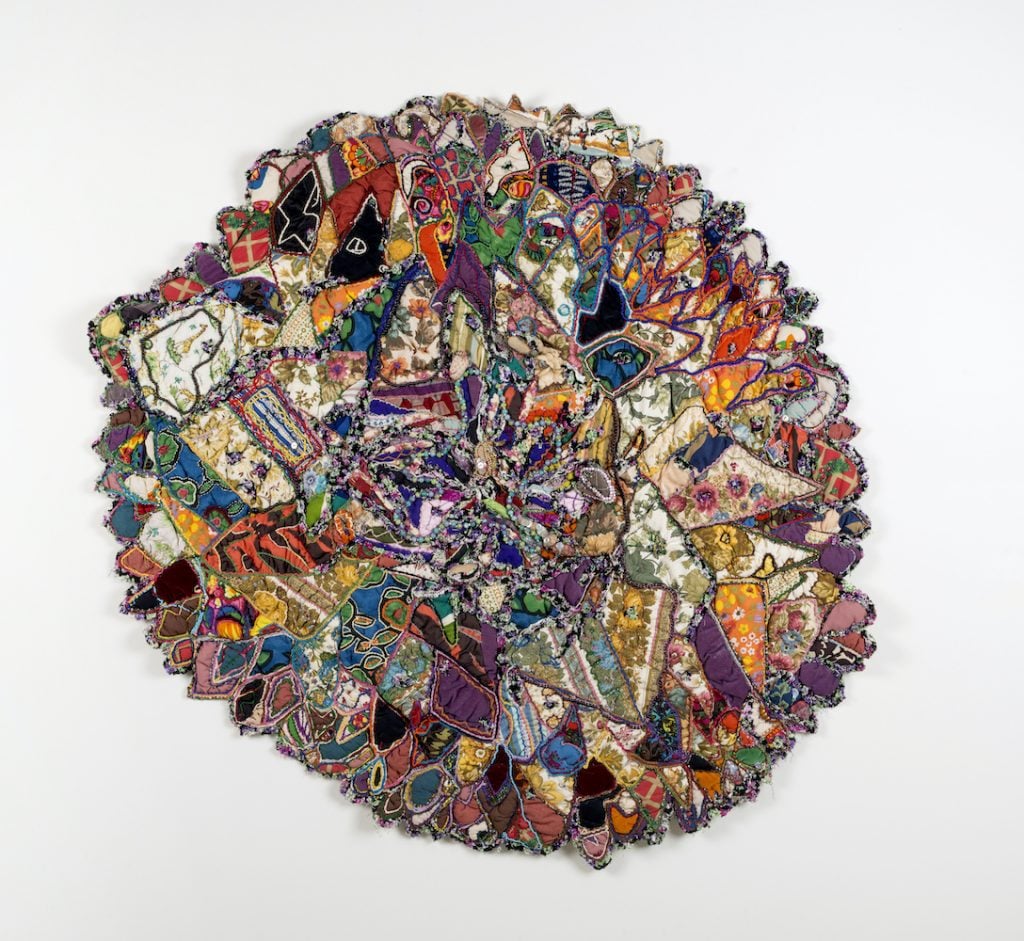

Artnet Gallery Network

To call the art that Elizabeth Talford Scott makes “quilts” is not entirely right. At least it doesn’t tell the full story of the master folk artist’s patchwork textiles, which are richer in detail than most paintings, much less the blankets on your bed.
Martha Macks-Kahn, founder of Goya Contemporary gallery in Baltimore, which represents the late artist, points to an untitled 1990 work by Scott, which incorporates beads, rocks, netting, and shells in addition to fabric. “This is not just a quilt,” the gallerist tells Artnet News.
“Within her quilts, she used historical symbols and handed-down ancestral ideas in the form of storytelling,” Macks-Kahn continues. “A personal spirituality with active purposeful use of varied materials brings her art into the realm of sculpture.”
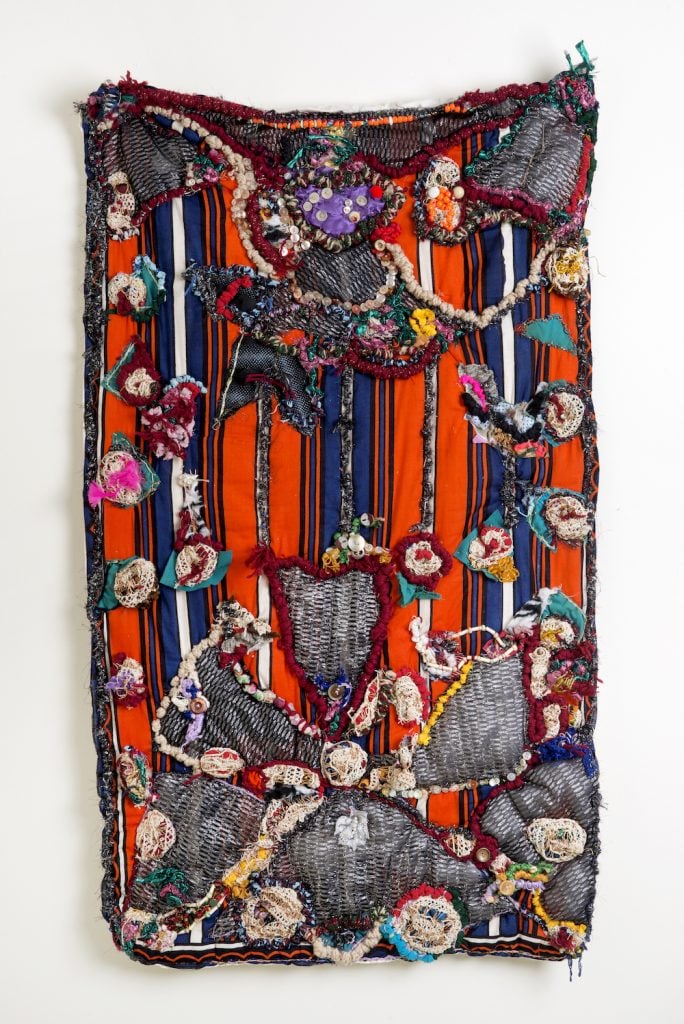
Elizabeth Talford Scott, Untitled (1990). Courtesy of Goya Contemporary.
A new exhibition of Scott’s work is on view now at Goya as part of the gallery’s 20th-anniversary suite of programming. The show, “Upside- Downwards,” includes 20-some artworks that the artist made between the early ‘80s, after her daughter was grown, and her death, in 2011, at age 95. It’s the period most consider her artistic peak.
“I remember my mom use to quilt and do beadwork while watching soap operas on TV after she retired, or previously in the evening after she came home from work,” Joyce J. Scott, Elizabeth’s daughter—and a MacArthur grant-winning artist herself—says. (The younger Scott is also on Goya Contemporary’s roster.)
“We’d sit and listen to the radio or, when I was very young, we would look at the screen on that minuscule television and both quilt, talk about funny things, make dolls, and have a good time.”
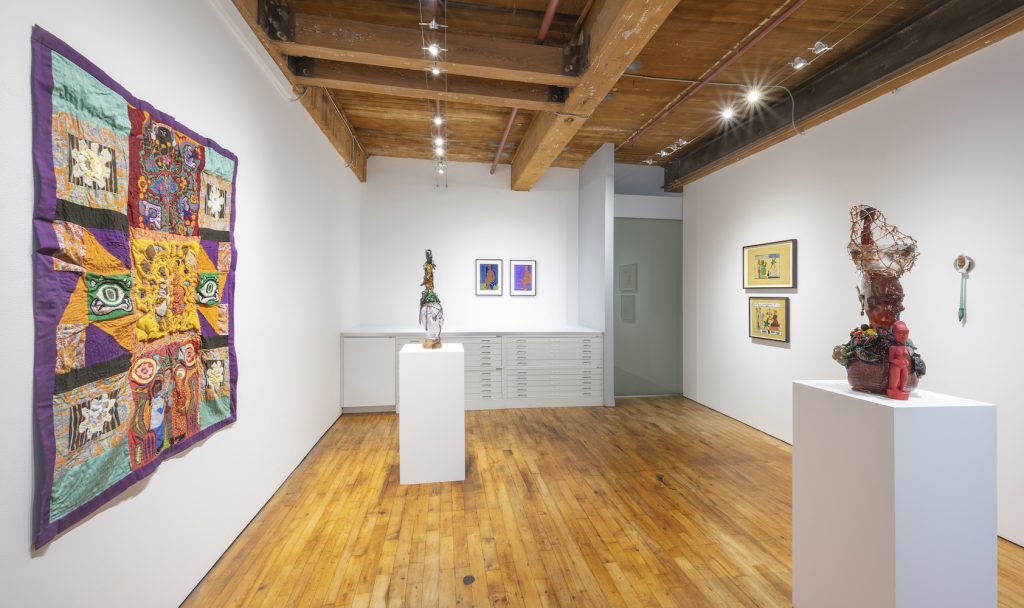
Installation view of “Elizabeth Talford Scott: Upside-Downwards,” 2020. Courtesy of Goya Contemporary.
The elder Scott was born near Chester, South Carolina, in 1916, on Blackstock Plantation, the same land on which her grandparents were once held as slaves. The sixth of 14 children, she picked up a number of skills at an early age from family members.
“My mom’s side of the family was really just a polyglot of craft people,” Joyce explains. “They were potters, they caned chairs, they were baskets weavers, crocheters, knitters, weavers. They did blacksmithing, they were musicians and storytellers.”
That inherited history of making, an ingenuity born from learning to use and repurpose the materials around oneself, all coalesced into Elizabeth Scott’s art.
“She just spread those mediums out… into her quilt work,” her daughter continues. “She was beading and adding knots, and crochet. She combined things that would have typically been separate techniques.”
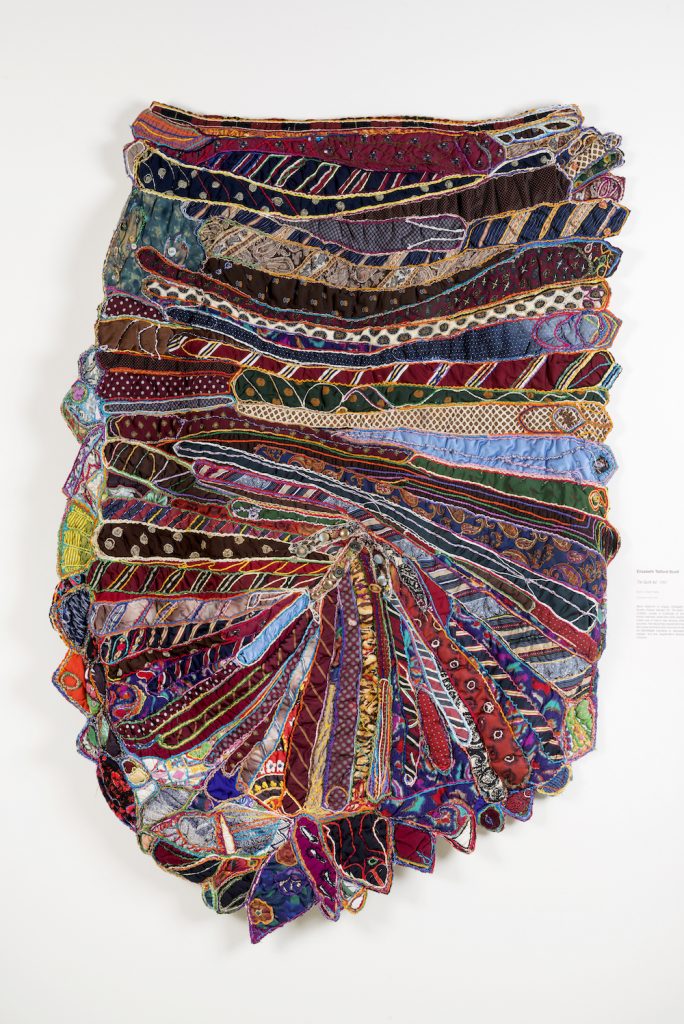
Elizabeth Talford Scott, Tie Quilt #2 (1991). Courtesy of Goya Contemporary.
That lineage courses throughout Joyce’s work as well. Hers is a practice that spans sculpture, textiles, printmaking, performance, and installation—and yet, it’s not hard to see her mother’s DNA in all of it.
It was for that reason that Goya opted to represent the elder artist’s work years of working with the younger.
“These multi-generational artists learned from and taught one another,” says the gallery’s executive director and partner, Amy Eva Raehse. “They shared principles and techniques—sometimes even materials—and yet their works convey individual truths. Sharing their narratives through one program helps us underscore that blackness is not monolithic.”
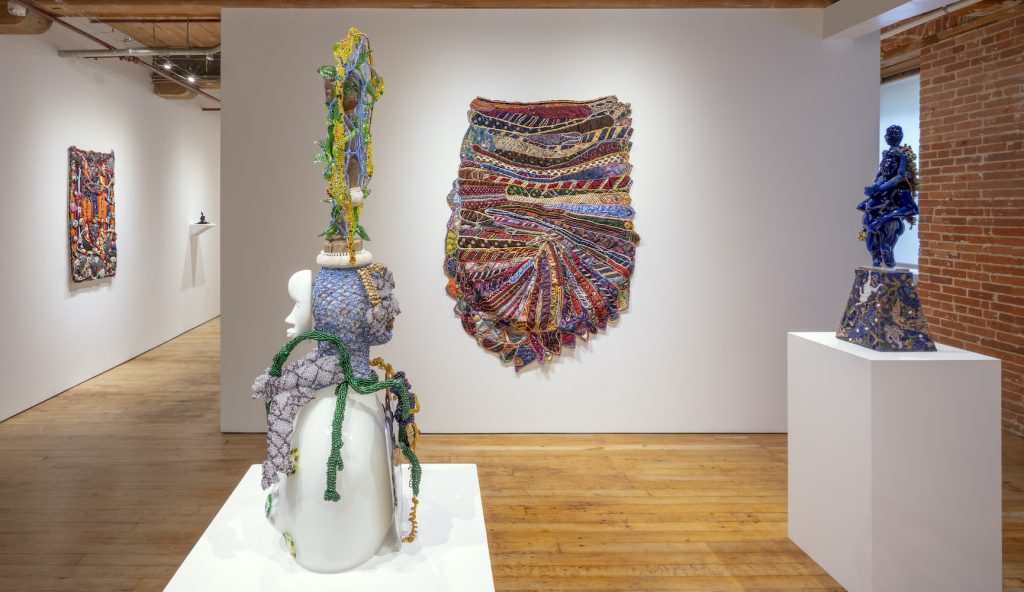
Installation view of “Elizabeth Talford Scott: Upside-Downwards,” 2020. Courtesy of Goya Contemporary.
Illustrating her point, Raehse recalls the process of putting the show together with Joyce. The two sorted through Elizabeth’s work like kids going through an old family photo album.
“As we relished in their stunning beauty, Joyce exclaimed many times, ‘this is like coming home,’” she says.
When asked to put on a finger on what it was that Joyce found so comforting and inspiring about her mother’s works, she says: “It was her stick-to-itiveness, her strength, stubbornness, ability, and her race for justice. She had an improvisational spirit and rascally ways, which gladly came through in everything.”
See more images from Goya Contemporary’s exhibition below.
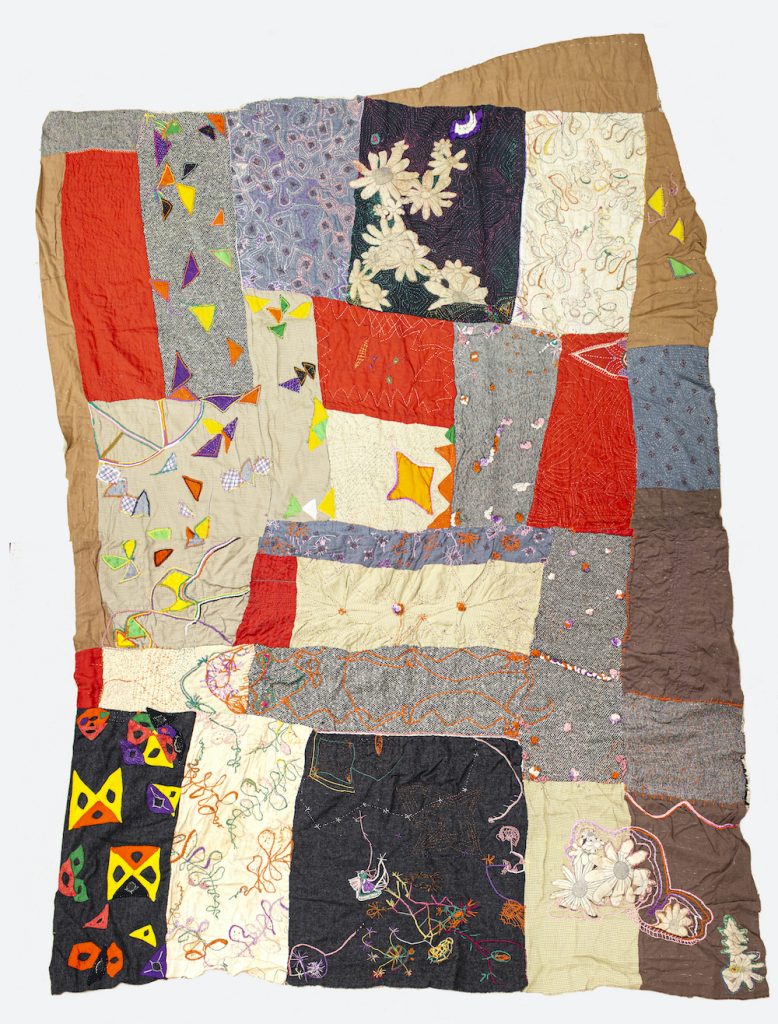
Elizabeth Talford Scott, Fifty Year Quilt (1930-80). Courtesy of Goya Contemporary.
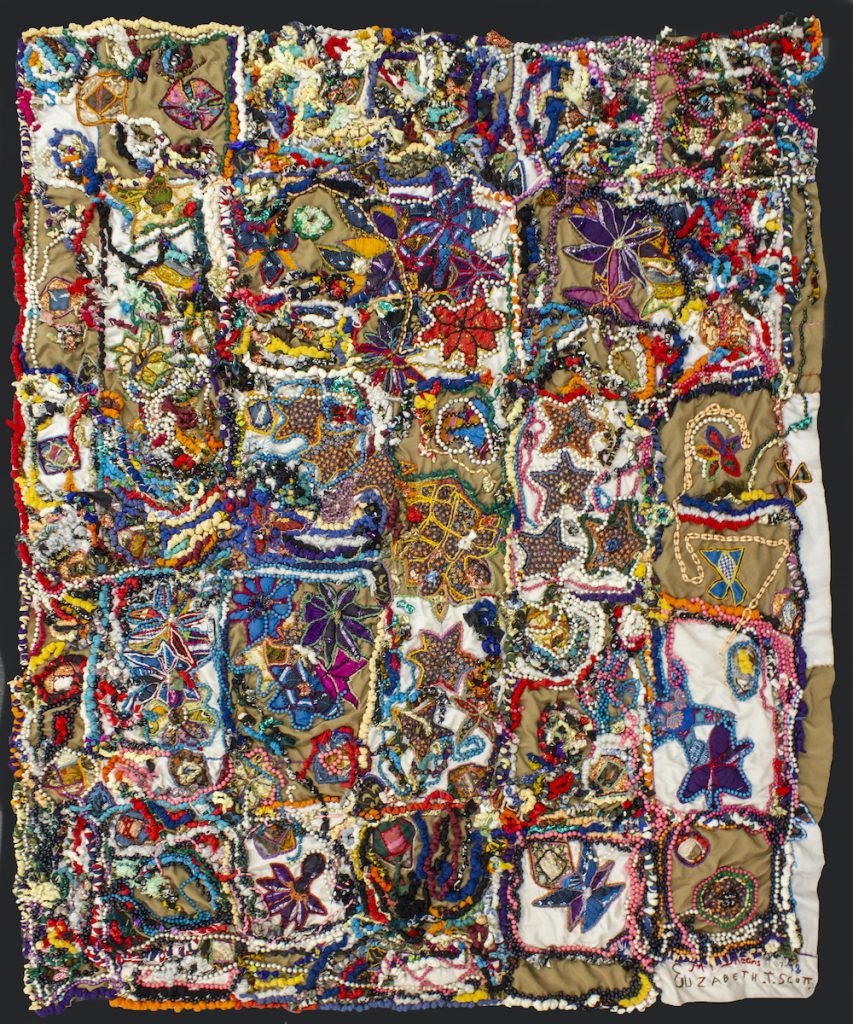
Elizabeth Talford Scott, My Dreams (1987-98). Courtesy of Goya Contemporary.
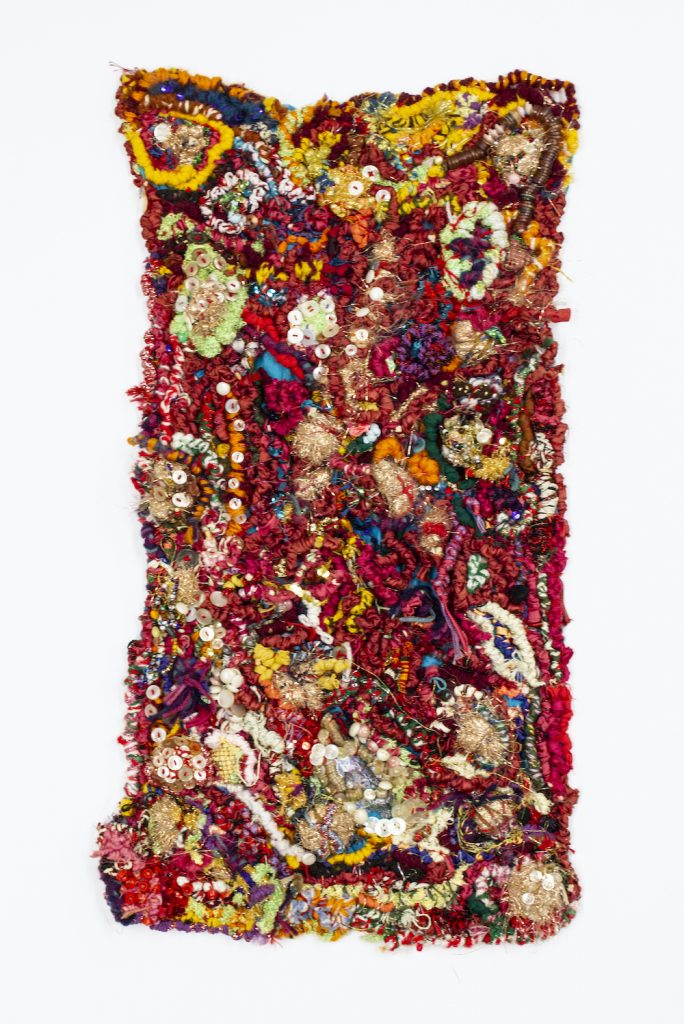
Elizabeth Talford Scott, Untitled Prayers (c. 1999). Courtesy of Goya Contemporary.
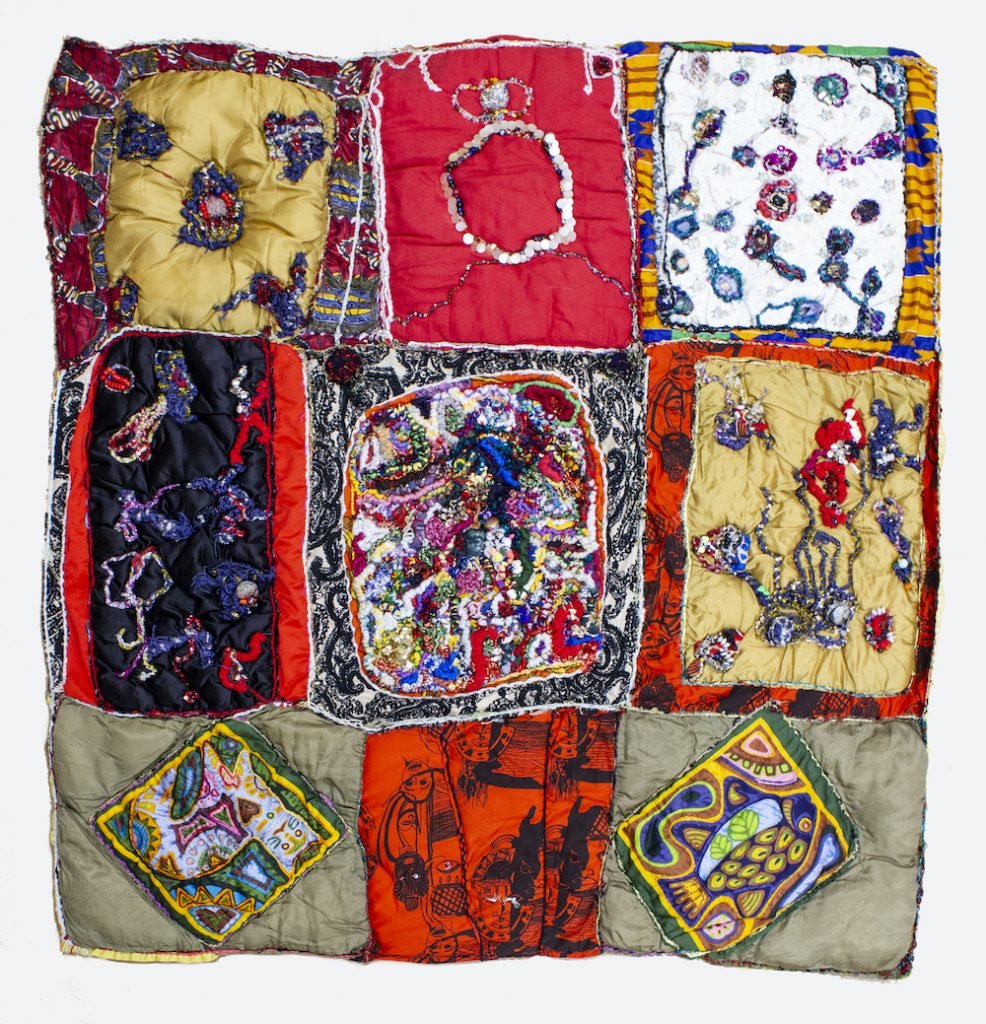
Elizabeth Talford Scott, Bits and Pieces (1995). Courtesy of Goya Contemporary.
“Elizabeth Talford Scott: Upside-Downwards” is on view at Goya Contemporary Gallery through January 28, 2021.
